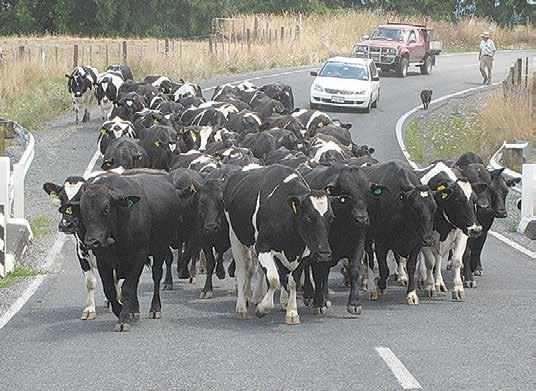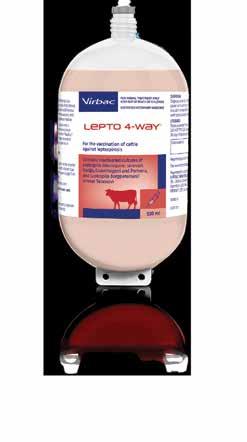




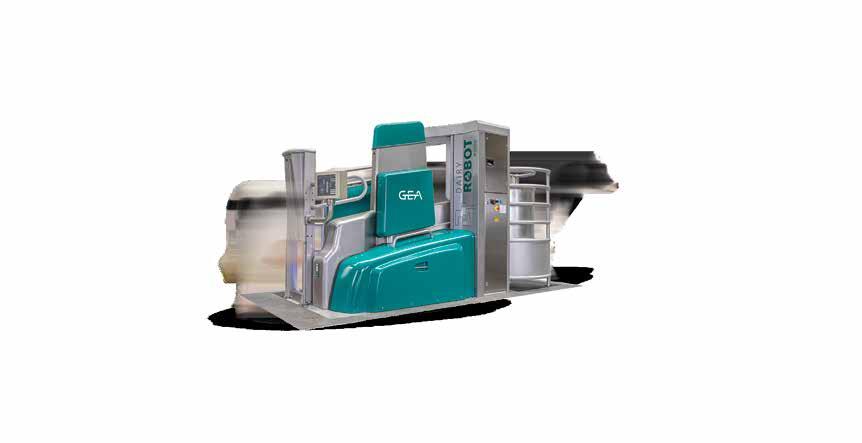

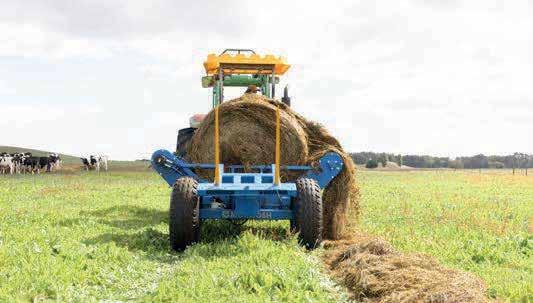
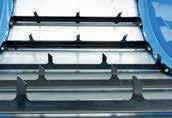
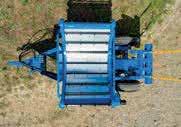
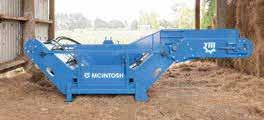


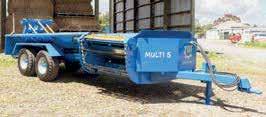
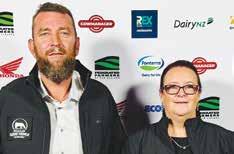


MANY CONTRACT milkers in badly drought affected regions around the country are coming under severe financial stress and farm owners are being urged to help them though a bad patch until the start of the new season.
Brendan Attrill, chair of Federated Farmers Sharefarm owners group and also a farm owner and farm consultant, says dire conditions in many dairying regions are putting a huge strain on farming relationships. He says the worst hit areas are some of the biggest milk producing regions in the country –especially the Waikato and Taranaki but also Northland and parts of the Manawatu.
He says the worst hit contract milkers will be those who are paid directly by the milk processing companies.
“Some farmers have had to dry their cows off as early as mid-March because of the lack of feed and contract milkers who are paid by the processors may not get a payment of any sort until the new season starts and that could mean up to four months without any income,” he says.
Brendan Attrill says slightly better off are contract milkers who receive a monthly cheque from the farmer. He says on the all the farms he supervises, he insists on contracts of this nature. He says there
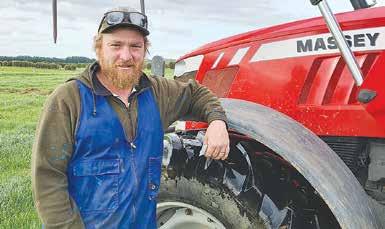
will invariably be tensions between some farm owners and contract milkers but the situation that both find themselves in is no ones fault.
“It is really just an outcome driven by hungry cows and a lack of feed for them,” he says.
In his role as chair of the sharefarm owners group, Attrill says he’s been reaching out to owners to see if they can help the contract milkers through the present short term crisis. He says, by and large, farm owners should be able to help by virtue of the fact that they have substantial equity in their businesses and the fact that the milk payout is good. He says so far he’s seen very little resistance from farm owners to help what he describes as good talented young people that the dairy industry needs.
“We are messaging out to owners to say, ‘can you do a couple of things for us’. Firstly, you can sit down and have a cup of coffee with your contract milker and just have general positive discussions about the situ-
ation. The second thing is, we want is the contract milkers to come to the owners with a clear plan as to how they are going to manage the cows through and particularly if they are tight on feed and supplements at the moment,” he says
Attrill says the third thing is to try and encourage owners to help out their contract milkers financially. He says this could involve supporting them to pay their staff or to put fuel in the farm bikes.
“We want to keep the contract milkers in the industry and if farm owners could just consider making a small top up payment to their contract milker every month for the next three or four months that would be great. Farm owners need to realise that the contract milker is a business partner and if they stick with them they will be rewarded in the long term,” he says.
Attrill says he’s had discussions with all the banks and rural lenders and they understand the situation and are prepared to help.
JUST BECAUSE it has started raining doesn’t mean that the drought is over – the effects from a farmer’s perspective are ongoing.
Feds Dairy Chair in Taranaki, Sam Ebbett, who farms near Inglewood, says the weather has been kind to him. He says the rains have come from the north and east and his pasture is in good shape. He says he’ll milk on for the next few months without any trouble. The present weather systems tend to dump the rain inland and miss the coastal areas of the province.
“Essentially the closer you are to Mt Taranaki, the better off you are,” he says.
But it’s a different story along the whole of the Taranaki coast from as far north as Warea right down to Whanganui. Farmers in these areas have received between 20 and 40mm in the last few weeks, which in theory goes some way to being a ‘drought breaker’.
But Brendan Attrill says there’s another problem.
“Grass grub, which has hit a number of farms in South Taranaki, and so for many farmers it’s a double whammy,” he says. The challenge now is restoring both drought and grass grub damaged pastures.
“Soil moisture levels in the drought zones are terrible but soil temperatures are excellent,” he says.
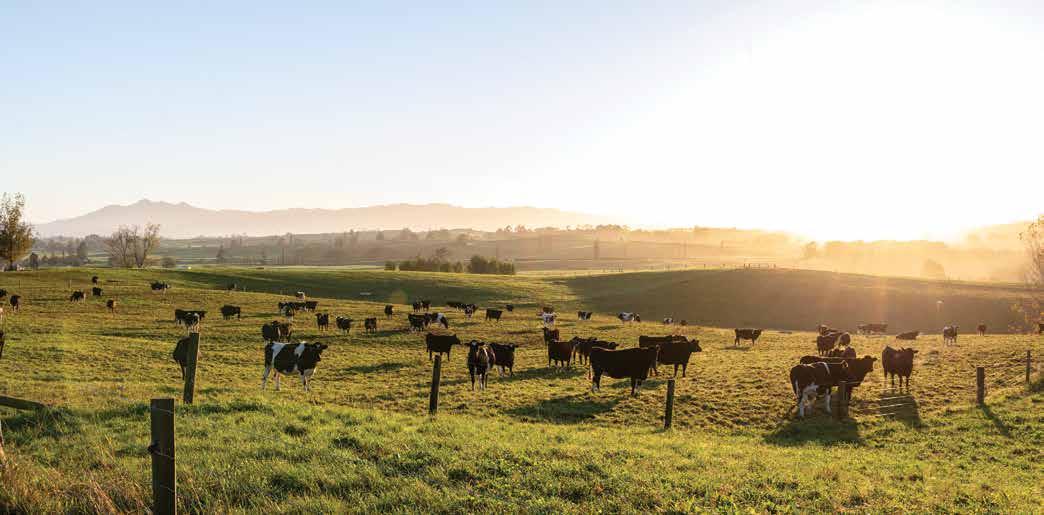
inflammation, oxidative stress, and microbial challenges.
A RECENT clinical study has highlighted the potential for a bioactive whey protein to support immune responses to influenza vaccinations.
Immune Defense Protein (IDP), developed by Quantec Ltd, is a whey protein complex derived from pasture-fed cows which contains a natural complex of over 50 bioactive proteins.
Those proteins then work to support the immune system. Each protein plays a specific role, contributing to the complex’s overall ability to support the body’s natural defences against
The double-blind, randomised, placebocontrolled clinical trial performed in partnership with Massey University and University of Auckland showed that participants who supplemented their vaccination with IDP showed enhanced levels of influenza antibodies post-vaccination.
The trial involved 53 adults, aged 25-65, who consumed either a high dose of IDP, a standard dose or a placebo daily for eight weeks. Those in the high-dose group experienced significantly higher level of flu-specific antibody levels.
John Dawson, chief

executive of Quantec, told Dairy News there is the potential for IDP to be used in conjunction with other vaccines.
“IDP works effec-
tively with the bodies immune system, enhancing the bodies response to an immune challenge,” Dawson says.
“Based on our invitro
testing, it is possible that IDP supplementation would provide benefits in enhancing/supporting the immune response to other infections in addi-
tion to influenza.”
He says that because IDP is already an active ingredient in some supplements and functional foods (foods that offer an additional health benefit), it provides benefits for immune and digestive health.
“It’s properties also make it suitable for skincare applications - where it can help prevent infection and reduce irritation caused by skin conditions such as acne and rosacea,” Dawson says.
“As well as being used for human applications, it is also used in petcare to support immune and oral health.”
Quantec has now commissioned a larger clinical trial of the pre-
LABOUR’S AGRICULTURE spokesperson says the Government’s decisions are set to hamstring growth within the farming sector.
Jo Luxton took over the shadow agriculture portfolio from long-time Labour MP and former agriculture minister Damien O’Connor following the 2023 election.
She is also the party’s spokesperson for agriculture, biosecurity and rural communities.
She says that growth can only be sustained when it is fueled by investment in research and development, evolving data management systems, strong educational pathways, high
retention rates, and well-supported communities.
“In other words, we need to keep funding the basics or we will be overtaken by our competitors,” Luxton says.
She says that several moves by the Government in recent months – including the abolition of AgResearch’s parasitology team working on drench-resistance and the much-critiqued consultation on the controversial Gene Technology Bill –work against the long-term solutions the primary sector needs.
The Gene Technology Bill in particular caused controversy earlier in
the year because many stakeholders –farmers, politicians, and lobby groups alike – found the consultation period too short in part because it fell over the Christmas and holiday period.
The proposed legislation would see greater use of genetic modification and gene editing technology outside of the laboratory.
In February, a review of science areas at AgResearch also saw its animal biotechnology and parasitology team discontinued entirely, a decision that was met with criticism from organisations like Wormwise, Federated Farmers and the New Zealand Veterinary Association.
Luxton claims National hopes farmers are too busy to look past its slogans to see “what’s really happening”.
“I’ve met with farmers and local communities, one thing stands out: the human factor matters.
“Rural communities face complex social and environmental challenges, and this Government is not acting fast enough to develop policies that are both practical and attuned to the issues they face,” she adds.
Luxton says it’s important that policy decisions impacting the primary sector consider the impacts on humans from all angles, includ-
vaccine immune support usage in Shanghai with more than 300 children aged between 3 and 8 set to participate.
“This double-blind placebo trial is observing the effect of IDP supplementation on cold and flu incidence and severity of symptoms over a 4-month period (winter/ cold and flu season),” says Dawson.
“The trial will finish in May, and we hope to publish the results later this year. In this trial, there is no intentional vaccination occurring, so the data we collect will provide a good indication of how IDP may benefit the immune health of those who may not get vaccinated.”
ing mental health, healthcare, rural infrastructure, and the environment.
“Getting the balance right on regulations and developing new trade relationships are important pieces of the puzzle, but they aren’t the entire picture,” she says.
Luxton says New Zealand’s agriculture sector requires policies that “connect the dots between regulation and the practicalities of farming life”.
“We must invest in long-term solutions to boost the wellbeing of our rural communities. Sustained growth in the agricultural sector won’t come from rushing ahead, but from careful planning, long-term investment.”
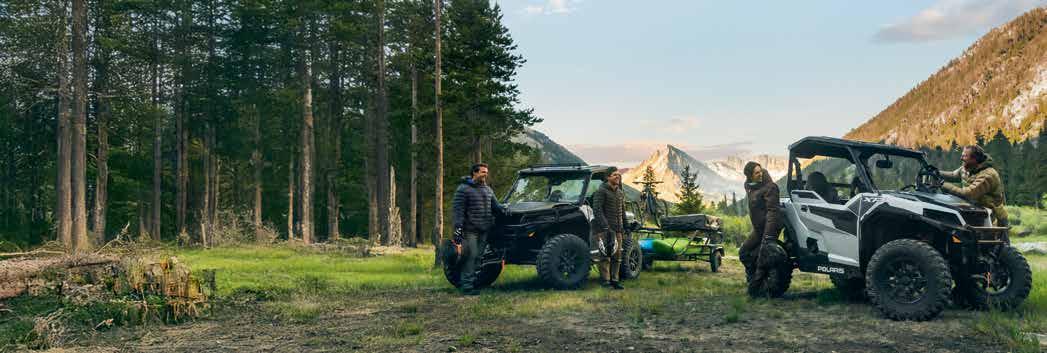
TASMAN SHAREMILK-
ERS Warric and Rachel Johnson haven’t let the 2006 milk payout crash put them out of business.
Despite being forced to sell cows to survive, the Johnsons bounced back and were this month crowned 2025 West Coast/Top of the South share farmers of the year. They won $7,600 and five merit awards.
The Johnsons were runners-up in the same category last year and say the awards programme enabled them to learn more about their business and fine tune it.
Warric and Rachel are contract milkers for Phil and Jocelyn Riley on their 375ha, 1100-cow Tapawera property. The employ four staff and a tractor driver. Most of the Johnsons’ farming career has been in mid-Canterbury, but the last six years have been spent in Tasman.
Warric recalls that they were lower order sharemilkers buying in-calf heifers to build their herd when the
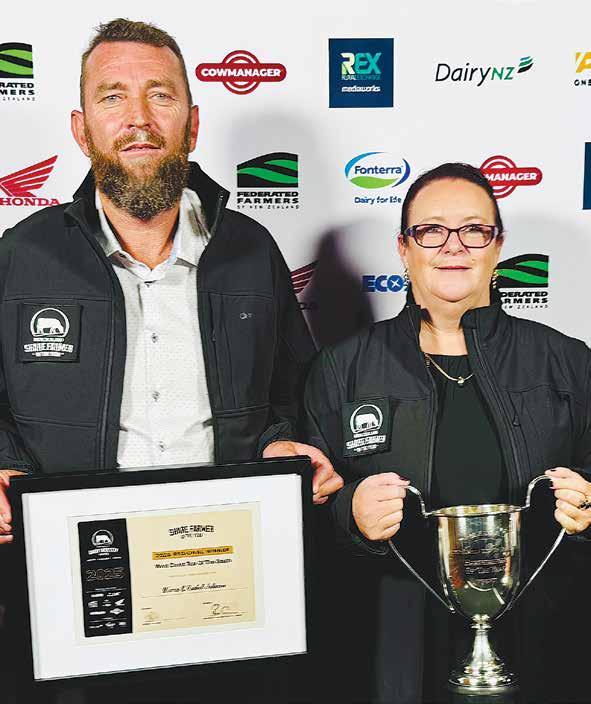
“I’m very much a numbers man and am constantly diving into the financial side of the business. I have an endless curiosity for analysing which I’m passionate about and like to find out meanings and answers for any problem presented.”
payout crashed. “Sometimes things happen outside our control, there is nothing wrong with having to start over again. You will be wiser for it,”
Warric told Dairy News
He says that they still enjoy what they do, even in the tougher times.
“That’s when you build character and learn the most,” he says.
“I’m very much a numbers man and am constantly diving into the financial side of the business,” he says.
“I have an endless curiosity for analysing which I’m passionate about and like to find out meanings and answers for any problem presented.”
The Johnsons supply Synlait and are proud to achieve the processor’s Lead with Pride certification while running two large scale dairy farms.
Future farming goals including farm ownership.
Warric thanked current farm owners Phil & Jocelyn Riley, mentors Gary Ashton and Murray Johnson and previous employers Stuart Brander and Hans Fikken for their support.
The New Zealand Dairy Industry Awards are supported by national sponsors ASB, CowManager, Ecolab, Federated Farmers, Fonterra, Honda, LIC, and Trelleborg, along with industry partner DairyNZ.
The runners-up in the share farmer category are Kaisa Sadowska and Sam Riley who are 50/50 sharemilkers on Brent Riley’s 200ha, 500-cow Collingwood property. They won $4,300 in prizes.

EMISSIONS BY dairy cattle decreased by 1.6% according to the latest NZ Greenhouse Gas Inventory report. It shows that between 2022 and 2023, total emissions from agriculture decreased 2.2% which included a 1.6% drop in dairy cattle emissions due to a fall in dairy cow numbers.
DairyNZ general manager Farm Solutions & Policy, Dr David Burger, says this is part of a trend that has
seen methane emissions from dairy cattle decrease by 4.11% since 2017. He says DairyNZ statistics show a 3.4% decrease in cow numbers - from 4.84 million in the 2021/22 season to 4.67 million in the 2022/23 season.
“But at the same time, average milk production per cow increased over this same period by 1.8%, up to 393kgMS from 386kgMS,” he says.
Dr Burger says our dairy farmers continue to work hard to improve onfarm efficiency and their environmental footprint, with the report reflecting that. He says improved productivity in
farming has enabled agricultural emissions to fall since 2014 and DairyNZ is supporting that through a dedicated programme of work focused sharply on productivity, resilience and sustainability.
“This includes our work to advocate for fair and achievable climate targets and our research into solutions for farmers to understand and manage their emissions,” he says.
Dr Burger says work being done includes a focus on forage species to understand their effect on baseline methane emissions and the response
to other mitigation technologies in a pasture-based system. He says they are supporting different delivery mechanisms for getting methane solutions into our grazing systems, working to improve the accuracy of emissions accounting, including the inventory and helping farmers understand their on-farm greenhouse gas emissions.
“New Zealand dairy farmers are among the world’s most emissions efficient, and research is key to helping them maintain that position. DairyNZ is investing in research alongside a
range of partners to develop and test different mitigation solutions, ensuring they are fit for use in our pasturebased systems,” he says.
Burger says DairyNZ supports the independent panel on methane recommendation that the 2050 target be adjusted to 14-15% to 24% instead of the 24-47% that is currently legislated.
“Our long-held position on climate targets is that they should reflect the latest science and warming impact of methane, while also considering the mitigation tools and technologies available to farmers,” he says.
MASSEY UNIVERSITY has begun trialling the use of superior beef genetics in its two dairy farms as part of Beef+Lamb New Zealand’s dairy beef progeny test.
Hamish Doohan, Massey University’s farm operations and sustainability manager, says as one of the new hosts of the test, Massey University will be looking to further minimise the number of bobby calves born every year and add value to its non-replacement calves by finishing them within their wider farm operation.
The university’s two dairy farms, which also host numerous research projects, are run under two very different systems.
Dairy One is a 119ha dairy unit running 260 cows on a once-a-day milking system. The herd is made up of one-third Jersey, one-third crossbred and one-third Friesianbased cows.
Soils on Dairy One, which lies adjacent to Palmerston North and the Manawatu River, are free-draining and the farm hosts the Whenua Haumanu programme; a partnership between Massey University and the
Ministry for Primary Industries that carries out comprehensive research into regenerative agriculture.
Dairy One is a DairyNZ system one/two farm, so there is no imported feed. The cows are wintered on the dairy platform.
Dairy Four is the opposite. It is a more intensive dairy operation running 600 Friesian-based cows on a traditional twice-aday milking regime.
The unit, which covers 220ha effective, has heavy clay soils and is a system four farm, so imported supplementary feed is used. A proportion of the herd is wintered on Massey University’s Keeble Farm and the balance is wintered in a free-stall barn.
Doohan says they have been using beef genetics to try and add value to their nonreplacement calves for eight years.
In Dairy One, they had been using Hereford and Wagyu genetics and Hereford genetics in Dairy Four. Four years ago, they added Charolais genetics to the mix and were very impressed with the results.
There was no noticeable increase in
calving problems and Charolais cross cattle grew-out well, with the majority sold prime before their second winter.
Both the Charolais and Hereford genetics the Massey University farms had been using had already proven their worth as “graduates” of the Dairy Beef Progeny Test (DBPT) and their progeny performed to expectations. This reinforced the value of using genetically superior beef bulls in their mating programme.
Hamish says by signing up to host the DBPT, Massey University will get access to the bulls selected for the Progeny Test earlier and will be helping the wider industry by identifying the genetics that best add value to non-replacement dairy calves.
“It will help farmers identify what genetics they may want to use in the future.”
Striving to minimise the number of non-replacement calves sent to slaughter, the university will be taking advantage of tools such as sexed semen as well as beef genetics to produce an animal for a different value chain.
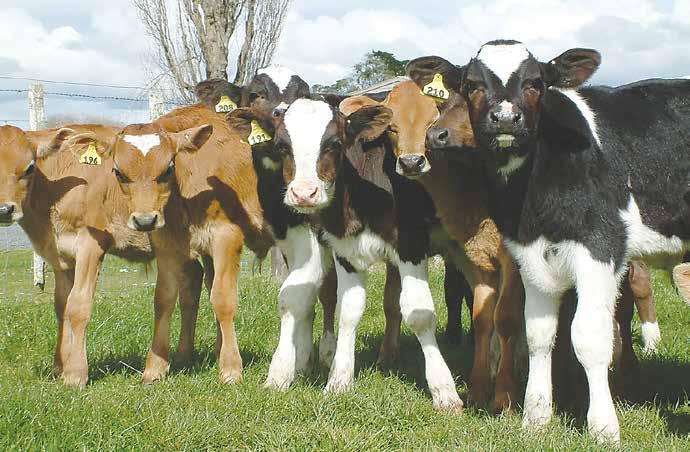
LAST SPRING’S mating was Massey University’s first as DBPT hosts and on the Dairy Four farm, 10 different sires, a mix of Hereford, Angus, Charolais and Simmental bulls, were used in the artificial insemination (AI) programme.
On Dairy One, six different sires, two Angus, two Hereford and two Charolais, were used.
Angus bulls with low birthweight Estimated Breeding Values (EBVs) were used across the Jersey cows to help reduce the risk of calving problems and the bulls selected for use across the smaller crossbred cows also had EBVs for birthweight that were at the lower end of the range.
As host farms, staff on the dairy farms will be required to record mating dates, pregnancy diagnosis, calving dates and calf weights.
The calves will be reared in cohorts and a record kept of how they were reared and the weights and date of weaning.
After weaning, the calves will be sent to Massey University’s drystock farm “Keebles’’, one of the three blocks that make up the university’s Sheep, Beef and Cattle Research Unit, and grown out on grass. To ensure a fair comparison of the genetics, the cattle will be run in mobs which represent the sires used.
Their 200, 400 and 600-day weights will be recorded and B+LNZ will organise a contractor to eye-muscle scan the cattle prior to slaughter. Massey will then need to submit slaughter data.
Hamish Doohan says the aim is to get all beef cross animals sold as prime before their second winter, but usually a few are carried through for finishing in spring.
“We have the luxury of multiple soil types so we can winter animals on lighter, free-draining soils.”
The Massey University farms are part of phase three of B+LNZ’s DBPT which involves more farms and a new approach to identifying opportunities offered by superior dairy beef.
The DBPT had been based on Limestone Downs then Pāmu‘s Renown farm, but last spring, cows on five new host farms across three regions were mated to DBPT sires representing Angus, Hereford, Charolais, Simmental and Murray Grey breeds.
While the locations have changed, the objectives of DBPT remain the same: to identify the best beef genetics and highlight the value superior beef genetics generate at every stage of the supply chain.
As well as the two Massey University farms, new host farms are two Dairy Trust Taranaki farms and an owner-operated commercial dairy farm at Five Forks near Oamaru. For the first time, Jersey cows will be included in the DBPT. Jim Inglis, B+LNZ strategy and operations manager, says the move to run the DBPT across more sites was driven by a desire to include a wider cross-section of farms across more regions and therefore better showcase the outcomes of the DBPT.
THERE’S BEEN a positive response to the Government’s latest move to make freshwater farm plans more practical and affordable.
Federated farmers describes the changes as a positive start that will give farmers a lot of confidence for the future while DairyNZ says the changes are what they have been advocating for over the past six years.
Associate Environment Minister Andrew Hoggard says the aim of the changes is to cut the cost and complexity out of the system and to reduce the number of farms required to have a plan and to take a riskbased approach to certification. He says the new




plans will still manage environmental impacts, but without unnecessary red tape, and they won’t be required for small blocks.
“Farm plans are useful tools, but they must be practical and matched to actual environmental risk,” he says.
Andrew Hoggard says officials are working with


industry, sector groups, and councils to finalise improvements through updated regulations.
Agriculture Minister Todd McClay says the Government is recognising existing industry programmes that achieve equivalent environmental outcomes and that farmers shouldn’t have to complete multiple plans.


DAIRYNZ’S Dr David Burger says his organisation is pleased that the new farm plans will recognise industry programmes and act as an alternative to local council consents where appropriate.
He says they’ve been working with dairy companies to provide a dairy perspective while the regulations are reviewed and appreciate this clearer direction on these important aspects.
“We look forward to working with officials to finalise further improvements by the end of this year. It has been our long-standing position that the current system should be improved to reduce cost and complexity and better acknowledge the environmental progress farmers and the wider dairy sector are making,” he says.
Dr Burger says DairyNZ has long championed an outcomes-based approach to freshwater manage -
ment. He says this means starting with the environmental outcomes that communities and tangata whenua want to achieve, and then addressing the specific contaminants of concern, whether sediment, E. coli, or nutrients.
“We are pleased that DairyNZ efforts have helped to secure a pathway to recognising existing industry programmes that achieve equivalent environmental outcomes,” he says.
Dr Burger says as part of the new plans consideration has to be given how existing regional plans may need to be amended to accommodate the changes to national regulations, necessary to avoid duplication and ensure integration.
Federated Farmers Colin Hurst says farm plans have huge potential to cut unnecessary red tape, compliance costs, and consenting
requirements for farmers. He says a tailored farm planning system that takes a risk-based approach will provide strong environmental protections without the over-thetop bureaucracy we’ve seen in recent years.
“For a farmer, this has the potential to be a game changer, replacing the need for expensive and uncertain resource consents or constantly changing council rules,” he says.
Hurst says the Government are making all the right noises – “but we’ll be keeping a close eye on the process and engaging with the then to make sure the system works in practice”.
“We are particularly pleased to see Ministers have agreed to reduce the number of farms required to have a plan and to take a risk-based approach to certification,” he says.
“The new system will also act as an alternative to local council rules and consents where appropriate, allowing landowners to meet requirements in a way that suits their farm systems,” he says.









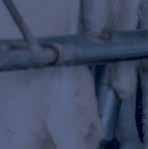




































FOR MANY farmers, the biggest regulatory challenge they face is the myriad things that the Resource Management Act throws up.
At the recent Central Districts and South Island Field Days, I talked to several farmers about the dramas they were having and heard about eye watering costs that they have faced in getting and renewing resource consents. In many instances these costs were six figures.
I also heard about this ridiculous scenario where
farmers are struggling to get long-term loans due to only being issued short-term consents –it’s hard to get a 20-year loan when the consent that allows you to effectively conduct business is for only 5 years. This provides little in the way of surety to the bank, or to the farmer or grower themselves regarding future planning. Then we have this other matter of SNAs, which have rightly been viewed as a breach of property rights. The same concern has also existed with the mapping of Sites of Significance for Maori (SASM) and Outstand-

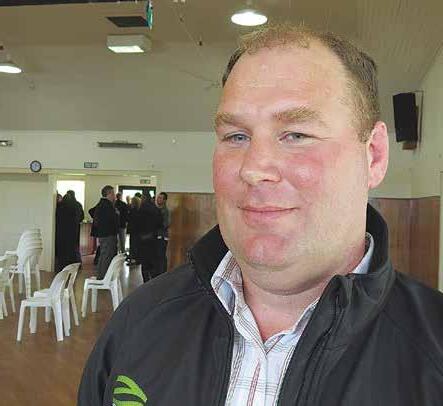
ing Natural Features and Landscapes (ONFL), and we’ve recently seen Hutt City and Gore District Councils go a little crazy with the digital paint brush in this space.


These are just some of the many absurd situations resulting from our resource management system which undermine the confidence that farmers and businesses need to have to invest in new technology and innovation.
This is why we have embarked on a programme of reforms which seek to put the enjoyment of property rights at the centre of resource management.
On the SNA front, we immediately prioritised the pause on any mapping of SNAs under the National Policy State-

ment for Indigenous Biodiversity (NPS-IB) as part of the 100-day plan. This was to stem the bleeding and give us time to conduct a review of their operation and occurred alongside several other surgical changes to provide some interim RMA pain relief.
This review has raised massive questions about the significance of some of the SNAs that have been mapped. When the Department of Conservation effectively manages one third of New Zealand, you might ask how much further we need to go into mapping things on people’s private property to protect our significant biodiversity. Sure, there may be cases where there is a need protect the last of some endangered fauna, but it’s fair
to say the current line is drawn far beyond this.
It is important to point out that despite this pause and review under the NPS-IB, we are still stuck with the broader RMA section 6 obligations around biodiversity, ONFLs, and SASMs. This begs the question: what should we do about that?
We have decided that the only way to sufficiently address these issues around SNAs – and all these other problems facing farmers for that matter – is to undertake wholesale replacement of the RMA. ACT prioritised this in its coalition agreement with National, recognising that the continuous tinkering of this fundamentally flawed legislation over the last 30 years has failed to deliver
We will be looking at a range of options, and front of mind is ensuring farmers’ great conservation leadership on their land is recognised rather than thrown back in their faces through blunt and overreaching regulation. We will turn the page on RMA section 6.
the relief Kiwis need.
My colleagues have recently announced this Government’s way forward on replacing the RMA, centring on the enjoyment of property rights. Whilst much of this detail is still a few months away, what was announced gives a clear steer on the direction we intend to take, and it’s clear this will deliver overdue relief to our farmers.
A property rights focus means there must be a much higher bar for infringement on people’s property rights, and that we must consider pathways for compensation in some circumstances where property rights infringements are

imposed for the ‘public good’. If it is the public who benefits, why should private property owners pay? Establishing how this is applied in relation to how we encourage the protection of biodiversity will be a key area of work.
We will be looking at a range of options, and front of mind is ensuring farmers’ great conservation leadership on their land is recognised rather than thrown back in their faces through blunt and overreaching regulation. We will turn the page on RMA section 6.
Going beyond SNAs and the likes, this new system will retain protections of the natural environment. Yet, while this will occur by way of environmental limits, we will do away with the blunt approach of requiring a consent for every activity through providing a range of horses for a range of courses. This will see many more activities permitted by right, common approaches codified into standards to avoid reinventing the wheel, and several other tools to manage effects across environmental domains. The goal? Fewer consents needed, fewer costs, more certainty, and less Wellington in the way of farming.
I encourage the rural community to make their voices heard in this process so we can get this right.
• Andrew Hoggard is the Associate Minister for Agriculture.

AS PART of preparing for a potential IPO in relation to the divestment process for its global Consumer business and integrated businesses Fonterra Oceania and Sri Lanka, Fonterra has named Anne Templeman-Jones as chair-elect of the Audit and Risk Committee for the Mainland Group board.
Fonterra is actively undertaking a dual-track process, pursuing both a trade sale and initial public offering (IPO) as potential divestment options.
Fonterra Chair Peter McBride says Anne’s extensive experience in both executive and board roles across a range of sectors will be valuable to the Mainland Group board.
“Anne’s career spans the banking and financial services, consumer goods and energy sectors. She has spent 25 years as a banking executive in global roles, and
her governance roles include nine years with the CBA Group, including six as chair of the Group Audit Committee, two years as chair of Blackmores Group, and seven years on the board of Worley Limited, including five years as chair of the Audit and Risk Committee,” says McBride.
This appointment follows the co-op’s announcement in March that Elizabeth (Liz) Coutts ONZM has been appointed as chair-elect for the Mainland Group board.
Fonterra says it also continues to progress the trade sale process, including engaging with potential purchasers of the Consumer and associated business
The co-op says that it is now at the stage where some potential purchasers may pre-emptively seek regulatory approvals, which is a standard step ahead of any deal being agreed.
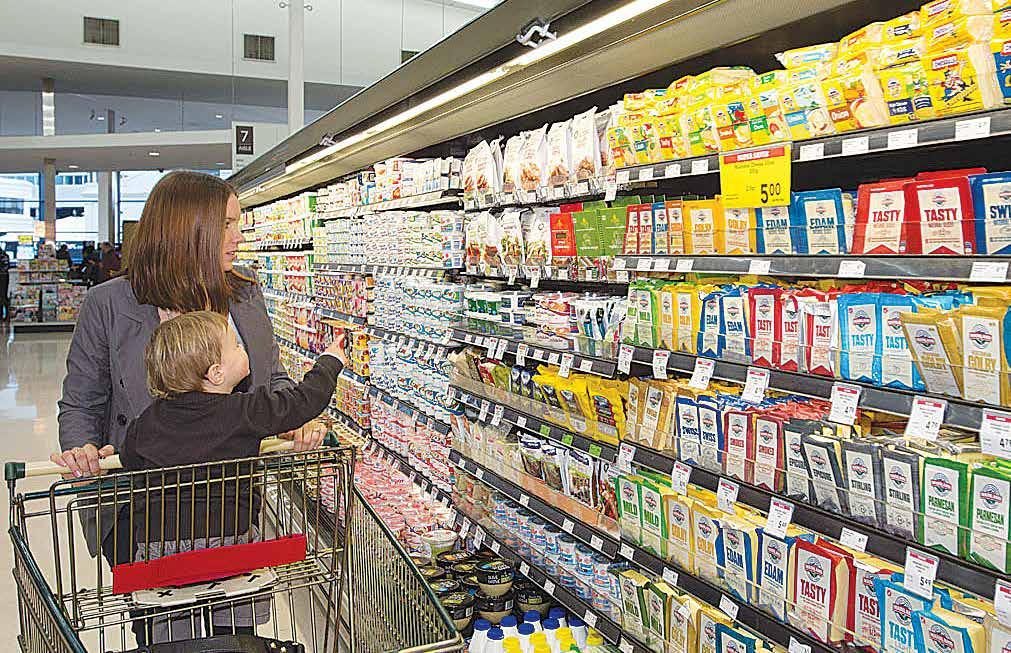
“The money you’d be saving compared to a brand-new uniform is absolutely worth it,” he told Dairy News
HAWKE’S BAY teenage entrepreneur Hugo Moffett is helping the rural community access cheaper school uniforms, all without leaving their homes.
Moffett launched the Get Uniformed website one year ago for buyers and sellers to connect in a cost-effective and eco-friendly way to buy school uniforms. On the website, anyone can upload the uniform for sale and anyone can purchase it. Once the sale has been made, the money will go straight into the seller’s bank account. There’s a 5% fee per transaction, which Moffett says helps to help cover costs.

Moffett says the uptake among the rural community is grand.
“There are many listings for many rural schools, in all different sizes and kinds,” he says.
He adds that getting uniforms in rural areas can be a bit of a hassle and a trip into town specifically to get the uniform can be a bit of a mission.
“And not to mention the uniform itself is very expensive.
“Get Uniformed lets you see exactly who in your community has the uniform you need and puts you in contact with them. And it also has a postage system so if you need the uniform to be delivered
to you that is always an option.”
He says the website is popular around the country but points out that his home region, Hawke’s Bay, has the largest quantities of school uniforms.
On his website, Moffett explains how the business was launched.
“I had ripped yet another pair of my school pants beyond repair, so I was off to the school uniform shop to buy myself another pair. I had to wait until Thursday at 3:15 as it was only open two days a week and for only one hour.
“There was a huge queue of boys needing uniform, so I waited and waited until I was finally let in. I searched for ages and finally found what I was looking for. I looked at the price and it was
$75 for one small pair of pants. I thought to myself, ‘heck, that’s a lot’.
“There were a million other things that I would rather spend $75 on, but school uniform is compulsory, so I got it anyway.”
Moffett says that later that evening, he thought about the mission he had to go through to get another pair of his uniform.
He started thinking about possible solutions.
“My first idea was to buy uniform off people and resell it in one convenient store, but this would be very high risk because I could be left with lots of unsold uniform.
“I then thought about the marketplace and letting people make their own listings.”
GLOBAL DAIRY Trade (GDT) and Arla Foods have announced that Arla will begin offering European sourced skim milk powder (SMP) on GDT Pulse from May 2025 as part of an extension to the GDT Pulse pilot.
“We’re excited to welcome Arla to GDT Pulse,” says Justin Matijasevich, interim CEO of GDT. “Their participation will expand opportunities for buyers and add further momentum to the GDT Pulse pilot.”
Arla’s SMP will be available through Pulse auctions held during non-GDT Event weeks, offering buyers more frequent price signals and purchasing opportunities. Arla’s first GDT Pulse auction is scheduled for 12 May 2025.
“Joining GDT Pulse is a natural evolution of our sales strategy,” says Thomas Carstensen, senior vice president of Arla Foods. “It allows us a flexible new way to connect with customers and offer our products more frequently.”
Launched in August 2022 by GDT and Fonterra, GDT Pulse is a pilot service offering shorter, more frequent online auctions to complement GDT Events. Auctions typically last 10-20 minutes and provide additional price discovery for core dairy commodities.






NZ FARMING is built on hard work, but also on innovation, a lot of which came about thanks to a focused scientific effort over many decades. We can’t afford to lose too much more of that sort of capability in ag science, so the cutbacks to scientific spending needs to be watched closely. However, Milking It notes that not all science has been created equally in recent years, and Crusha Collins’ axe deservedly fell on a lot of ‘research’ that should be relabeled as ‘woke, virtue signaling nonsense’. This peaked with the $4 million Landcare Research handed over to see if playing whale song to trees could cure Kauri dieback – true story. So, yes, take some of the scientific community’s moaning about cuts with a grain of salt, but let’s not throw the baby out with the bathwater!
FORESTS PLANTED for carbon credits are permanently locking up NZ’s landscapes, and could land us with more carbon costs, says the Parliamentary Commissioner for the Environment (PCE).
The new report, Alt-F Reset: Examining the drivers of forestry in New Zealand, says that Radiata pine is really the only economical tree for carbon farming. However, it could leave the Crown with future carbon liabilities if they’re damaged by pests, disease, fire or extreme weather events. Even climate scientists are anti-Pine, one saying “the PCE, Simon Upton, is uniquely qualified to provide impartial strategic guidance on New Zealand Forests. We should be deeply grateful for this as climate virtue signaling and perverse carbon incentives threaten to radically change our classic rural landscapes in a widespread and visually jarring fashion”.
The key takeaway from the PCE’s advice is ‘no to carbon forestry’.
THE ADVERTISING Standards Authority’s 2024 report revealed that not only is social media rotting our brains, it is also taking a growing chunk of New Zealand’s ad revenue offshore. Most digital advertising goes to platforms like Google, Facebook, and TikTok. Infometrics chief economist Brad Olsen says digital ad growth from these offshore behemoths is undermining traditional media.
Milking It reckons this trend would be easier to swallow if the tech giants were paying their share of local taxes, but there’s plenty of evidence that they are not. Former Herald editor Gavin Ellis says the ad drain is gutting the industry.
“Imagine if our health system was being forced to downsize because its revenue was being sent offshore – there’d be outrage.”
Less hot
FARMERS WON’T get any credit for this from the daily media, so Milking It is giving the bouquets where they’re due. Emissions by dairy cattle decreased according to the latest NZ Greenhouse Gas Inventory report. It shows that between 2022 and 2023, total emissions from agriculture decreased 2.2% which included a 1.6% drop in dairy cattle emissions due to a fall in dairy cow numbers. This is part of a trend that has seen methane emissions from dairy cattle decrease by 4.11% since 2017. DairyNZ statistics show a 3.4% decrease in cow numbers - from 4.84 million in the 2021/22 season to 4.67 million in the 2022/23 season. Average milk production per cow increased over this same period by 1.8%, up to 393kgMS from 386kgMS.
THE GOVERNMENT’S latest move to make freshwater farm plans more practical and affordable is welcome, and long overdue.
The changes are a positive start that will give farmers a lot of confidence for the future. The changes are largely in line with what the industry has been advocating for over the past six years.
The changes should cut the cost and complexity out of the system and reduce the number of farms required to have a plan and to take a risk-based approach to certification. The new plans should also manage environmental impacts, but without unnecessary red tape, and they won’t be required for small blocks.
Federated Farmers Colin Hurst says farm plans have huge potential to cut unnecessary red tape, compliance costs, and consenting requirements for farmers. He says a tailored farm planning system that takes a risk-based approach will provide strong environmental protections without the over-the-top bureaucracy we’ve seen in recent years.
“For a farmer, this has the potential to be a game changer, replacing the need for expensive and uncertain resource consents or constantly changing council rules,” he says.
It’s a feather in the Government’s cap, and Hurst says the Government are making all the right noises. However, farmers should still keep a close eye on the process and lobby groups should keep engaging with them to make sure the system works in practice.
On the Government side, Andrew Hoggard says officials are working with industry, sector groups, and councils to finalise improvements through updated regulations, while Agriculture Minister Todd McClay says the Government is recognising existing industry programmes that achieve equivalent environmental outcomes and that farmers shouldn’t have to complete multiple plans.
Head Office: Lower Ground Floor, 29 Northcroft St, Takapuna, Auckland 0622
Phone 09-307 0399.
Postal Address: PO Box 331100, Takapuna, Auckland 0740
by: Rural News Group
by: Inkwise NZ Ltd Contacts: Editorial: sudeshk@ruralnews.co.nz
: davef@ruralnews.co.nz Rural News on-line: www.ruralnews.co.nz
Subscriptions: subsrndn@ruralnews.co.nz
• Printed by Inkwise • Distributed by Reachmedia
Publisher: Brian Hight Ph 09-307 0399
General Manager: Adam Fricker Ph 021-842 226
Editor: Sudesh Kissun Ph 021-963 177
Machinery Editor: Mark Daniel Ph 021-906 723
markd@ruralnews.co.nz
Reporters: Peter Burke Ph 021-224 2184 peterb@ruralnews.co.nz
Subscriptions: Julie Beech Ph 021-190 3144
Production: Dave Ferguson Ph 027-272 5372
Becky Williams Ph 021-100 4831
Digital Strategist: Jessica Marshall Ph 021 0232 6446
AUCKLAND SALES CONTACT: Stephen Pollard Ph 021-963 166 stephenp@ruralnews.co.nz WAIKATO & WELLINGTON SALES CONTACT: Lisa Wise Ph 027-369 9218 lisaw@ruralnews.co.nz
SOUTH ISLAND SALES REPRESENTATIVE: Kaye Sutherland Ph 021-221
THE GOVERNMENT’S announcement that it will create a new advanced technology public research organisation (PRO) is sparking conversations about what advanced technology means for New Zealand, and for the research and innovation needed to grow our economy.
In announcing the advanced technology PRO, Prime Minister Christopher Luxon said he was particularly excited about this new institute, focused on the commercialisation of cutting-edge technology such as AI, quantum computing and synthetic biology. New Zealand should operate at the cutting edge – unlocking the jobs and opportunity that come from world-leading research and innovation.
At Scion we strongly agree with this sentiment as it presents an opportunity for New Zealand to position itself as a world leader in research across these specific areas.
Most advanced countries have a science policy that outlines technologies they should take a leading role in. We think the new advanced technology PRO has the opportunity to fill that role for NZ and continue to define our own research direction as new technologies are developed. Smarter use of advanced technologies and more investment in capital will enable Kiwi businesses to be internationally competitive.
This change is part of reforms aimed at modernising our innovation, technology and science system, to streamline our R&D, and ensure it is focused on meeting NZ’s future needs.
We want to see an active discussion on what the advanced technology PRO will look like, and what advanced technologies matter most to NZ. We think that could include: Advanced manufacturing. Researching and developing biotechnol-
ogy and clean technologies such as renewable energy will help drive NZ’s transition to a lowcarbon economy. Clean and climate technologies are essential for meeting NZ’s emissions reduction targets.
Gene tech that will transform agriculture and medicine, leading to more resilient crops and to personalised medical treatments that will enhance healthcare for all New Zealanders. We’re very supportive of proposed changes to gene tech legislation that will remove barriers to innovation and growth in this field.
Advanced materials such as biochemicals and bioplastics. These contribute to a sustainable future by offering highvalue, low-emission alternatives to traditional petroleum-based plastics that have a significant environmental impact.
Artificial intelligence and robotics across the agritech and food tech industries. Research and development in these fields will enhance efficiency and sustainability in food production. Agritech solutions will boost NZ’s exports and productivity and reduce emissions in our food and fibre sectors. AI will also drive innovation in business.
Energy tech developments such as marine biofuel to help shipping companies lower their emissions
Quantum computing, which will be essential for our understanding of complex biological systems. The advanced technology PRO institute can play a vital role in keeping NZ up to speed with global developments.
New Zealand’s geographical isolation presents challenges and opportunities and raises other questions. How can we make sure advanced technology strengthens and supports the things that make us unique?
How can we capitalise on advanced technology research at a practical, actionable level? These questions should
all be part of the future advanced technology conversation.
At Scion we welcome this growing conversation. We recognise the important part advanced
technologies play in helping New Zealand achieve economic growth, enhance productivity and address climate change challenges while protecting people and the environment.

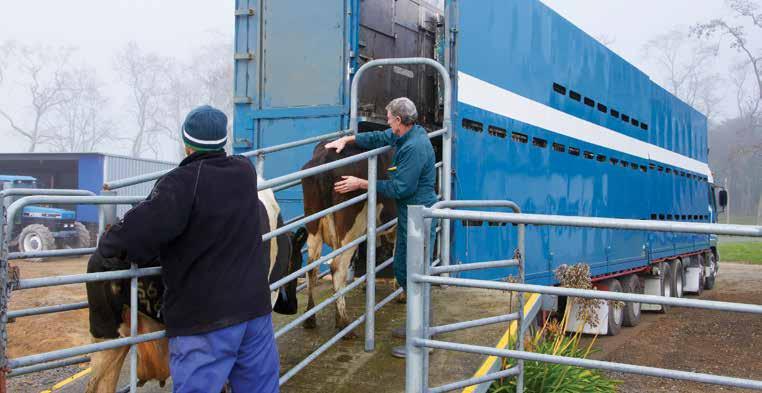
Moving Day is on the way. Keeping NAIT up to date is key to closing the gate on disease.
Remember the basics:
• update your details
• tag and register your animals
• record your movements.
Visit OSPRI.co.nz for more, including stepby-step videos and a handy checklist of everything you need to complete your move.

Everyone from experienced veterinarians and young professionals to the Wormwise programme and outstanding clinics have been recognised in this year’s New Zealand Veterinary Association Te Pae Kīrehe (NZVA) awards. As part of a series looking at this year’s rural winners, Leo Argent talked with Mark Bryan, winner of the President’s Award for his meritorious career work in the veterinary profession.
You first started off in the UK before coming to New Zealand permanently. How did that come to be?
I qualified as a vet in Glasgow in 1988 and spent about 7 years in the UK before I moved out to NZ in 1995, and since 1997 I’ve worked down in Southland.
I used to be a very keen mountaineer and first came out here in 1989 because I had some mountaineering friends.
I spent 6 months climbing the Southern Alps over winter and whilst I was travelling around I bumped into and met people… it also had some good vet practices. So, I thought I must come back to New Zealand. I went back to my job in the UK and finally in 1995 managed to get a job out here. For 6 months initially, then 12, then I never left.
Tell us about some of the positions you have held over these years.
I volunteered in various roles at the New Zealand Veterinary Asso-
ciation (NZVA) for over 20 years, starting on the Dairy Cattle Veterinarians (DCV) committee. I joined their committee about 20 odd years ago and was on the committee for 9 years, three rotations of three years. Then I was elected to the NZVA board (same rotation of three lots of three years).
In the meantime I was also on the NZVA’s antimicrobial resistance committee as the chair. I stayed on as the chair for a couple of years and just last year stepped down from that role. I’m still on that committee but I don’t have a chair role. In each case it’s a voluntary role, normally made up of practicing vets and clinicians but sometimes it might be people from industry or MPI.
How has the veterinary profession evolved over the last 20 years?
Even just talking about my 9 years on the DCV board, we went through a period of a significant number of inductions performed each
year as part of standard practice to a place where we didn’t do any, or very few. That was a real step change for the industry and the profession, trying to get our heads around some of those changes.
More recently we’ve been moving down a path of a more careful use of antimicrobials, obviously recognizing the resistance risk is significant globally. We’ve been moving to ‘how can we prevent disease’ rather than just treat disease, so there’s been a greater focus on vaccinations and preventive management.
We had a goal in 2015 to significantly reduce antimicrobial use over the years to 2030. We’ve already halved our antibiotic use- and we were already the third lowest user for animal antibiotics in the world. Probably the most significant impact has been social media. That’s obviously had some good aspects but also some quite challenging aspects for the profession in terms of some of the feedback we

get and the environment that creates.”
Does the veterinary and animal health profession encounter social media disinformation to the degree that is seen in human health (e.g. vaccine related autism)?
It’s less common amongst farmers, who have seen disease in their stock over the years and are very appreciative of all the initiatives around preventative animal health. [But] amongst pet owners there’s probably not that experience. Most pet owners, even if they’ve had a number of pets for 30 years, wouldn’t have experi-
enced the trauma of parvovirus, for example. It’s only a small number of clients but certainly there are some out there with a different perspective. What have your observations been on the shortage of vets in the rural sector?
It certainly isn’t straightforward in terms of getting vets into rural areas. Obviously, a lot of vets like to be in the cities; there’s more support and they often have after hours services so you might not need to do after hours work, which isn’t an option in rural areas. I think the opposite is true - being a rural
Obviously, a lot of vets like to be in the cities; there’s more support and they often have after hours services so you might not need to do after hours work, which isn’t an option in rural areas.
vet is absolutely fantastic. You become part of an outstanding community and most of our young vets and students that come and experience work in a rural community find that really positive. 15 years ago, we set up a programme of a weeklong visit from students at Massey to come down to Southland over the winter, experience a different type of farming and lifestyle that they may not have been exposed to. I think that’s helpful for the students, exposing them to that sort of opportunity. You are involved with the XLVets group. Can you tell us more about that?
XLVets was set up
in the UK by a friend of mine about 20 years ago as a group of vet practices working together to share ideas and resources. As vet practices, we’re not good in working together, we tend to often be isolated rurally doing what we do. About 10 years ago I approached the head of XLVets in the UK to set up a New Zealand network. We wanted to develop an animal welfare plan for dairy farmers so we set up a program called WelFarm, which any vet or farmer in the country can have access to. That’s a standalone programme now. One of the other winners of an award this year was Neil Chesterton who specialises in the impact of lameness in cattle plus the causes and prevention thereof. Have you had previous interactions with Chesterton?
I’ve known Neil for many years, he’s well deserving of that award. We’ve had him here talking to our trainee vets on many occasions and we’ve had him to farmer events. That’s the sort of thing Neil does across the country; he’s a fantastic communicator and educator. He’s a real diamond in the profession for New Zealand.






AUTUMN CALVES are born in kinder conditions than what their spring cousins enjoy. But it takes a careful nutrition regime and a close eye on growth targets to capitalise on the opportunity nature, through pasture, offers this time of year.
A keen focus on autumn calves’ bodyweight targets will also reap future production and financial benefits.
However, for those farms closely monitoring autumn calf liveweights, they need to ensure they are focused on the right numbers.
SealesWinslow nutrition extension specialist Simon Butler says national industry liveweight targets for young stock are not optimal. In fact, he believes these are closer to what should be considered minimum weight goals.
“Young stock liveweight correlates directly with milk yield in a cow’s first lactation. Heifer calves grown well have the potential to deliver an additional 65kg milksolids each, or around $650

per head a year as lactating cows.
“With the average herd having 100 head of replacements, that’s $65,000 a year. This is a lot of money to leave on the table by not investing in autumn calves’ nutrition at this early stage of their lives.”
Regardless of when a
DAN M c GOWAN
BENEATH THE routine of spraying crops lies a growing concern that has remained largely under the radar: the link between pesticide and herbicide exposure and Parkinson’s disease. Parkinson’s disease is a progressive neurological disorder that, over time, robs sufferers of many of their faculties and quality of life. It is the second most common neurodegenerative disease after Alzheimer’s, but it is the world’s fastest growing. Disturbingly, rates of Parkinson’s are rising particularly quickly in rural farming communities.
Our increasingly ageing population is a factor, but this does not alone explain the rapid growth in incidence, especially given that fact that 20% of people living with Parkinson’s experience symptoms before age 50. Genes play a role too, with approximately 15% of individuals with Parkinson’s having a family history, but a lifetime of exposure
calf is born, it needs to hit or exceed key bodyweight targets on time. And, depending on breed, calves must average 600g to 800g of daily bodyweight gains for the first two years of life.
“A heifer at calving should reach 90% of her mature body weight,” says Butler.
“Liveweight, not age, determines maturity. Reaching a mature liveweight faster means she will reach puberty earlier, will get in calf earlier, and be in the herd milking sooner.
“A heifer achieving her liveweight earlier will also partition more of her energy output into milk
production, rather than into liveweight gain.”
Taking no shortcuts on meal quality becomes even more critical for autumn calves heading into winter.
“Autumn calves are entering a colder period when their growth rates must peak at a time when they are also adapting to
SUPPLEMENTING PASTURE with a high-quality hard feed is even more important for autumn calves, as they are likely getting a higher proportion of pasture in their diet earlier than their spring counterparts.
“A nutrient dense, low fiber, 20% calf meal with a high starch content and a quality suite of additives can develop the frame of the calf while also driving rapid rumen development. The result is better pasture intakes and less aggressive growth checks,” explains Simon Butler.
Quick and complete rumen development requires a hard feed containing a high starch component.
“Protein and energy are essential in developing the calf’s musculature and frame, and high levels are required to achieve good weight gains. But if starch content is low then the rumen won’t develop as well.”
That’s because rumen microbes break down carbohydrates to produce volatile fatty acids, the source of three quarters of a developed cow’s energy needs.
“Introducing a premium hard feed in these critical early days, and monitoring growth rates closely, will help ensure calves have what they need to get the best out of pasture and continue to grow during the challenging winter period,” Butler says.
“The end result is protecting yourself against leaving valuable milksolids income behind once they enter the milking herd.”
an all pasture/forage diet. So early rumen development is critical. To take advantage of the feed available and avoid a weaning check, rapid and complete rumen development must occur.
“But the challenge is that calves are pre-ruminants. This means they lack the capacity to effectively convert fibrous forages into energy. For this reason, a quality hard feed is essential for achieving optimal rumen development.”
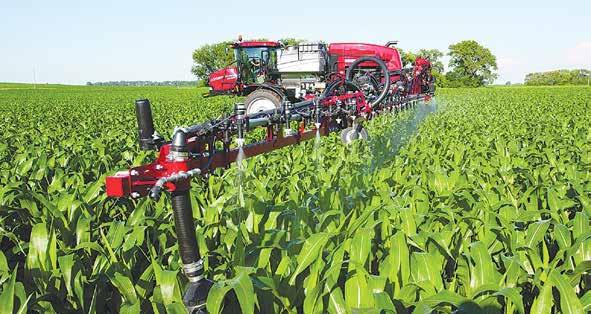
to environmental factors, including herbicides and pesticides, industrial chemicals, and air pollution, is the key driver of disease. Indeed, a growing body of scientific evidence points to a strong connection between exposure to certain agricultural chemicals and the onset of Parkinson’s. This is supported by population-level stud-
ies (called ‘epidemiology’) showing a clear geographical relationship between the use of these chemicals and Parkinson’s incidence, as well as animal studies showing that exposure to these chemicals induces Parkinson’s like symptoms.
Studies from all around the world have shown that certain pesticides
and herbicides—specifically paraquat, heptachlor, and rotenone—are associated with increased risk of Parkinson’s. Paraquat, for instance, has been found to increase the risk by as much as 200–600% depending on the level and duration of exposure, and it is now banned in many countries (it is restricted in NZ, and many para-
quat-containing products have been banned, but not all).
What these chemicals, as well as air pollution and solvents like trichloroethylene (which is used in mining and dry cleaning) have in common is that they are thought to damage mitochondria—the energy-producing parts of cells. The exposure doesn’t have to be massive or dramatic; the disease is likely the result of chronic low-dose exposures over decades combined with genetic risk/predisposition and exposure to other potential triggers (such as infections and head knocks).
It’s heartbreaking that many people were never informed about the neurological risks of the products they regularly used. Labels might contain safety instructions, but they don’t always spell out the long-term consequences. And for many older-generation farmers, protective equipment was rarely used or even available. • Daniel McGowan is the chief executive of Cure Parkinson’s NZ.
MARK DANIEL markd@ruralnews.co.nz
manufacturer Stewart Agricultural has released details of its new Legend Series, which will eventually supersede its bestselling GX tipping trailer range.
The Legend Range is the company’s standard tipping trailer, built with a box section chassis and a mild steel body with a box section frame and top rail for strength and durability. New styling sees the front of the chassis incorporate the drawbar mounts, with a remodelled sprung drawbar design said to be easier to adjust and
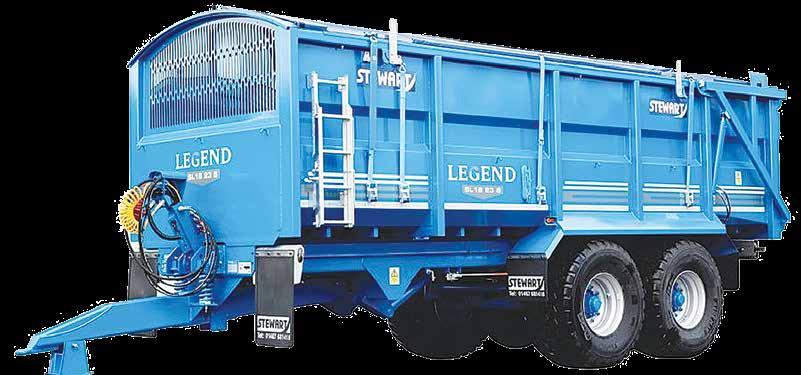
spray flaps at the front of the body and wheel nut indicators. The new series are equipped with
a new wiring and lighting circuit, engineered to allow the four sidemarker lights to work as indicators. New front
and rear marker lights are mounted on rubber stalks, with new rear multifunction lights and powerful LED work lights
fitted as standard ensure the trailer is highly visible in all conditions.
As part of a new
CONTINENTAL WAS founded in 1871, offering solutions for vehicles, machines, traffic and transportation.
In 2024, Continental generated sales of €39.7 billion and currently employs around 190,000 people in 55 countries and markets.
While well-established in the rural sector for many decades, the company has announced that it will focus its commercial specialty business on material handling, earthmoving and port operations, but will discontinue production of its agricultural tyre business by the end of 2025.
Following a comprehensive business review that established the market for agricultural tyres had undergone strong disruptions in recent years. Continental’s ambition is no longer compatible with the increasing commoditisation of the market.
The decision will largely affect employees located at its plant in Lousado, Portugal.
Until end of 2025, Continental will fulfill all contractual delivery obligations towards its agricultural customers, namely with its tire lines TractorMaster, Tractor70, Tractor85, CombineMaster and CompactMaster. The successful Multi-Purpose Tires lines will continue as part of Continental’s Commercial Specialty Tires Business.
Continental was founded in 1871, offering solutions for vehicles, machines, traffic and transportation.

• High Flow
• Compact/Robust
focus on safety, a reversing camera and rear door alarm are fitted as standard, with the former sending images via a
wireless connection to an in-cab display to provide the tractor driver with full visibility of the area to the rear of the trailer, while an audible alarm warns bystanders that the rear door is closing, so they should stand clear. In the same vein, the bottom section of the new access ladder folds up out of the way when not in use, with the company noting that with the lower section locked in the stored position, it will be less likely to cause an accident when the trailer body is tipped as it keeps the ladder above head height.

• New Pilot Flow Filter
• Side/Bottom Mount
• Detach to Clean

• For Water Storage Tanks
• Adjustable levels from 50mm-2.5m
• Minimises pump operation
•Available in 20/25/32/50mm
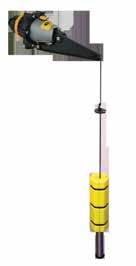
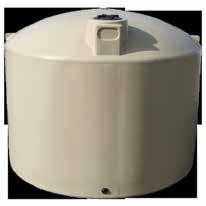

• Stainless steel bracket and Shaft
• Fits plastic and concrete tanks
• Rugged and long lasting

that is currently being built in Texas.
SINCE DONALD Trump’s import tariff announcement, the world has been on a wild economic ride.
Indeed, by April 8, US companies alone had reportedly lost around US$2.5 trillion in value, only ever seen before in the Great Depression, the Global Financial Crisis and the Covid Crisis – none of which were intentionally manufactured.
Of course, farm machinery manufacturers will be affected, particularly those with production sites in Europe who ship to the United States.
In response to the increased tariffs announced on April 2, JCB says it will increase the size of its new factory
“In the short term, the imposition of tariffs will have a significant impact on our business,” said JCB CEO, Graeme Macdonald, for the UK-based construction and agricultural equipment manufacturer.
“In the medium term, our planned factory in San Antonio will help to mitigate the impact, but we are thankful that the tariff is only 10%, but we hope that the UK government will conclude negotiations on a trade deal in the coming days and weeks.”
Trump used “emergency powers” to issue a 10% baseline tariff across the board on all imports to the US, that took effect on April 5th. Higher tariffs are set for countries with larger trade sur-
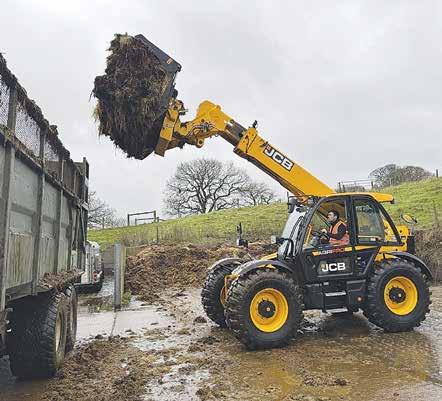
pluses with the US, like China at 54% higher and the European Union at 20% higher. Interestingly, the UK left the European
Union in 2020.
JCB’s has announced that its “original plan” to build a 46,500-squaremetre plant in San
Antonio has now been doubled to 93,000 square metres or 22 acres, easily making it the company’s second-largest factory.
The $500 million plant is set to begin production in 2026 and employ 1500 people, complementing the company’s North America headquarters in Savannah, Georgia, where it has been for 25 years and employs about 1000 people. That 46,500-square-metre facility manufactures skid steer loaders, compact track loaders and Teleskids. It also produces the High Mobility Engineer Excavator and Light Capability Rough Terrain Forklift for the US military and other NATO-aligned forces.
“JCB has been in business for 80 years this year, so we are well accustomed to change,” said JCB chairman, Sir Anthony Bamford. “The United States is the largest market for construction equipment in the
world, and President Trump has galvanized us into evaluating how we can make even more products in the USA, which has been an important market for JCB since we sold our first machine there in 1964.”
Elsewhere, global ag equipment company CNH Industrial says it has temporarily paused shipments due to uncertainty stemming from the ongoing tariff situation. In a statement, the company is stopping shipments from North America plants and European imports effective immediately. Officials say the move is temporary until they assess the full impact of tariffs on pricing. The company stated there are no impacts to production and shipment of parts will continue as planned.
Moving Day is a huge day in the farming calendar.
The farmers’ checklist will be extensive and include everything from stock transport regulations, to hooking up the power and internet, and more in between. Our special report will cover all aspects that farmers need to ensure their move goes smoothly. If your product or service is on that list, contact us now to advertise.
